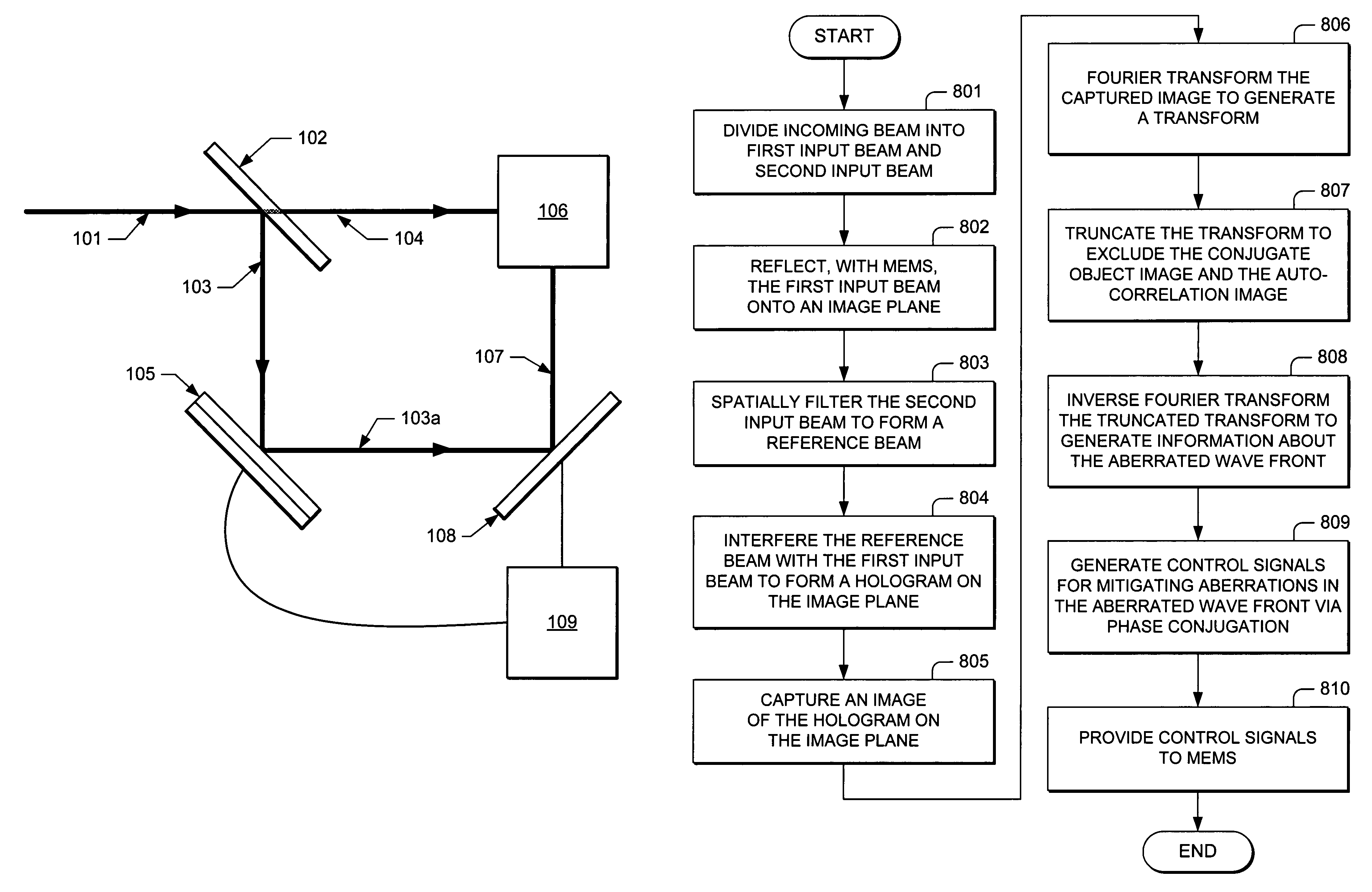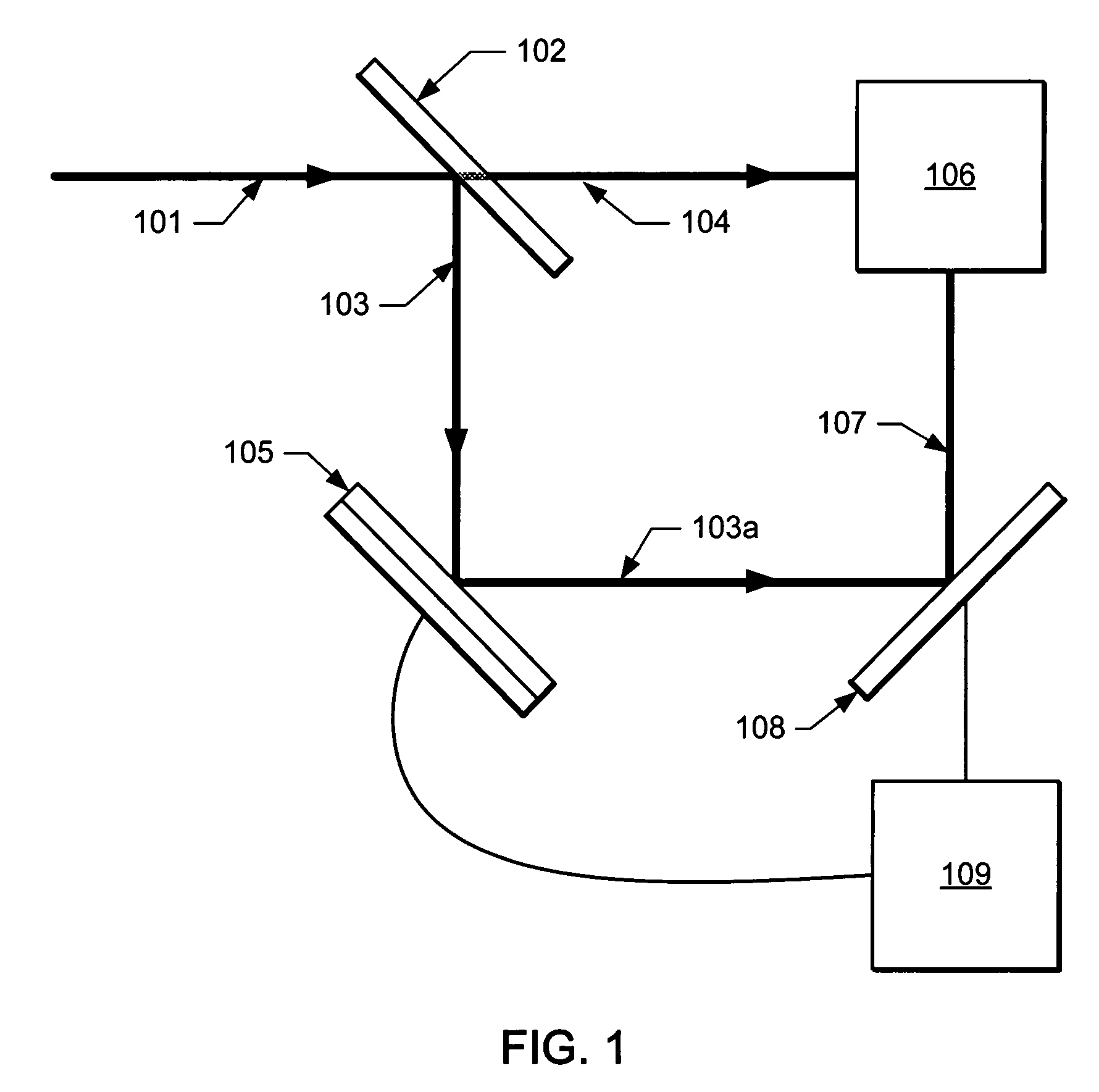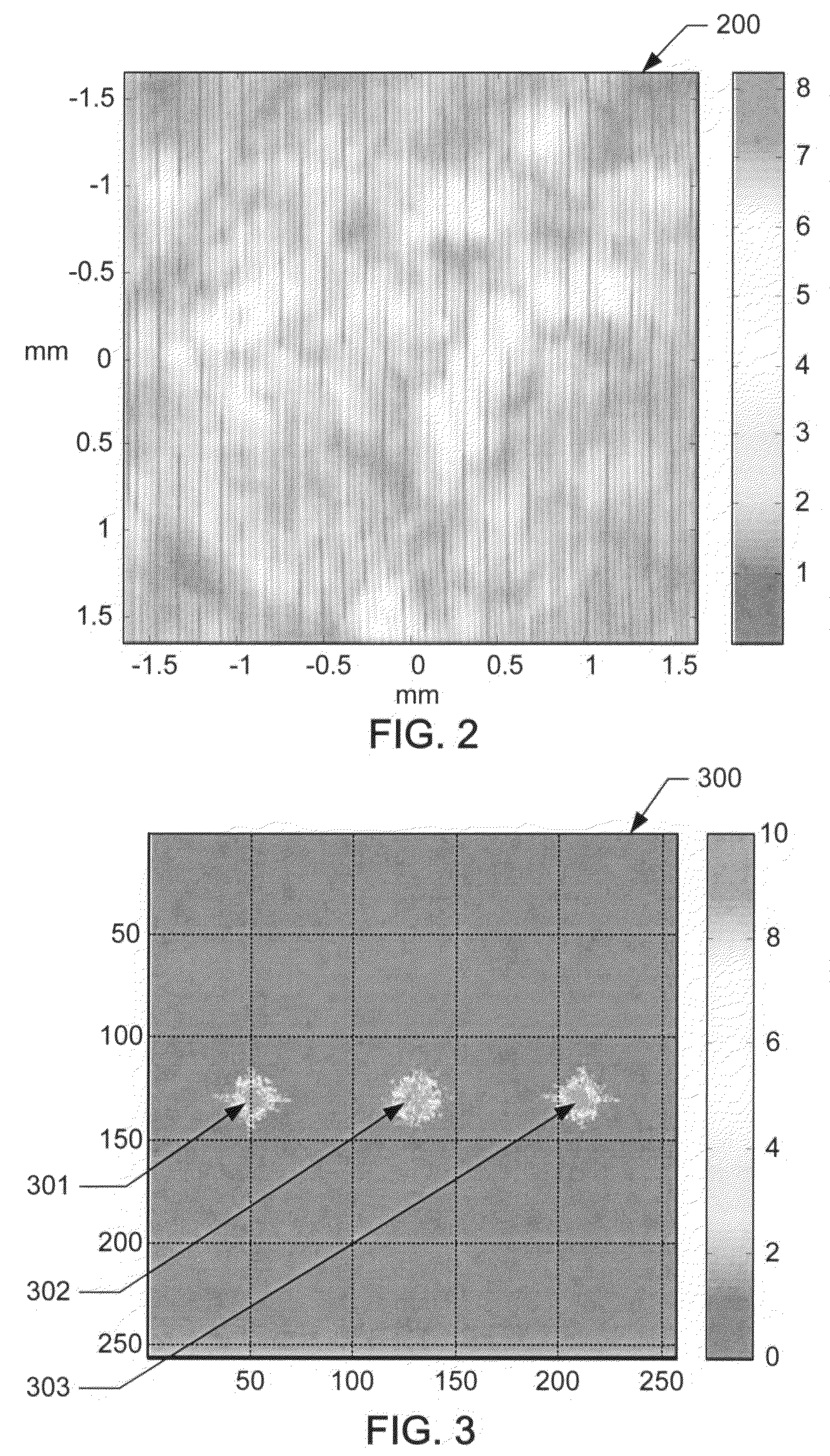High performance adaptive optics with a reconstructed coherent wave front
a coherent wave front and adaptive optics technology, applied in the field of adaptive optics, can solve problems such as the inability of systems to operate at higher frame rates
- Summary
- Abstract
- Description
- Claims
- Application Information
AI Technical Summary
Benefits of technology
Problems solved by technology
Method used
Image
Examples
Embodiment Construction
[0029]In the following detailed description, numerous specific details are set forth to provide a full understanding of the present invention. It will be apparent, however, to one ordinarily skilled in the art that the present invention may be practiced without some of these specific details. In other instances, well-known structures and techniques have not been shown in detail to avoid unnecessarily obscuring the present invention.
[0030]FIG. 1 illustrates an adaptive optics system according to one embodiment of the present invention. The adaptive optics system includes a beamsplitter 102, which splits an incoming beam 101 with an aberrated wave front into two identical beams 103 and 104. Beam 103 is reflected off of MEMS 105 onto an image plane of imaging device 108. Beam 104 is spatially filtered by a self-reference wave front generator (“SRWG”) 106 to produce a reference beam 107 with a flat phase. Reference beam 107 is directed by SRWG 106 onto the image plane, where it is inter...
PUM
 Login to View More
Login to View More Abstract
Description
Claims
Application Information
 Login to View More
Login to View More - R&D
- Intellectual Property
- Life Sciences
- Materials
- Tech Scout
- Unparalleled Data Quality
- Higher Quality Content
- 60% Fewer Hallucinations
Browse by: Latest US Patents, China's latest patents, Technical Efficacy Thesaurus, Application Domain, Technology Topic, Popular Technical Reports.
© 2025 PatSnap. All rights reserved.Legal|Privacy policy|Modern Slavery Act Transparency Statement|Sitemap|About US| Contact US: help@patsnap.com



